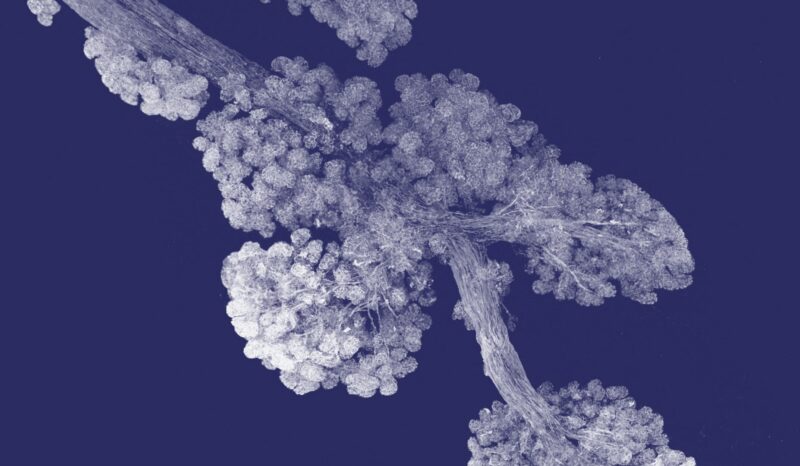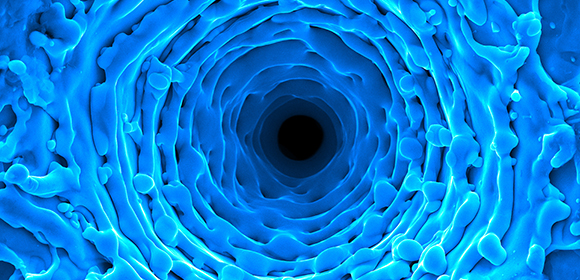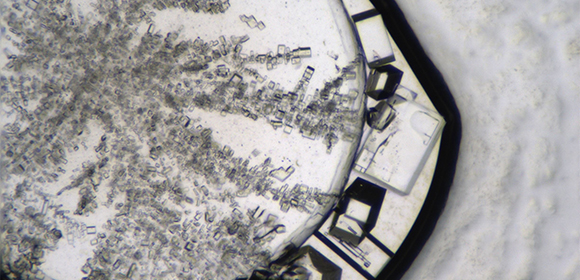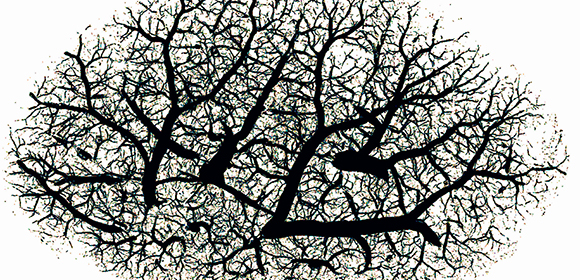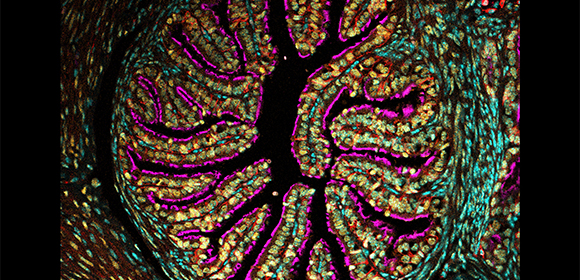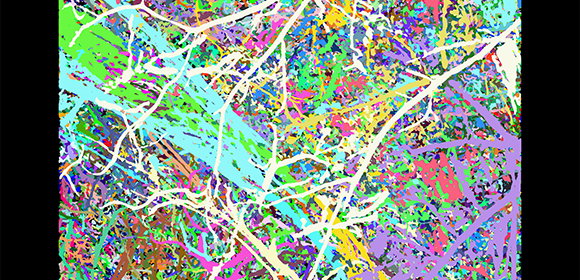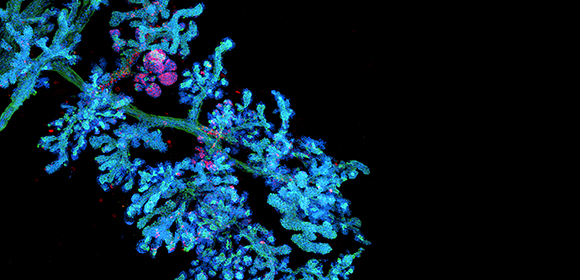Gridlock
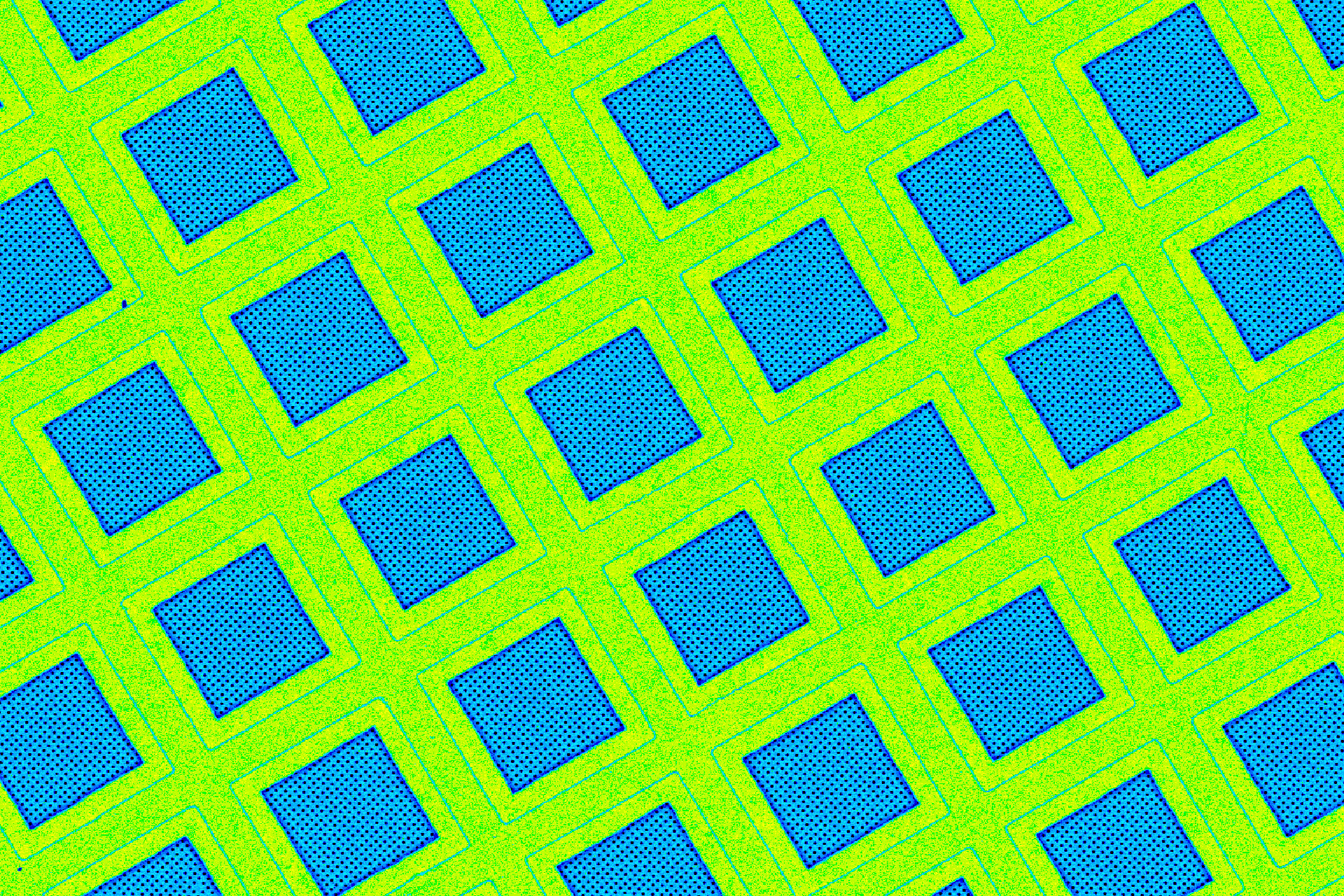
These fluorescent green lines show the support grid used to transport frozen protein molecules into an electron microscope.
Within the blue squares, you can see tiny pinprick holes, each about the size of a single bacterial cell – or the size of a speck of dust.
Researchers apply a solution of purified protein molecules onto the grid, freeze it rapidly to about -180C and then photograph the frozen molecules suspended in the holes.
The process helps us understand how the body’s biological ‘machines’ work. This enables scientists to design new drugs to treat diseases or confirm exactly where a drug attaches to a molecule.
In cancer research, for example, this level of precision means treatments can be developed with fewer side effects than conventional therapies.
Artists



